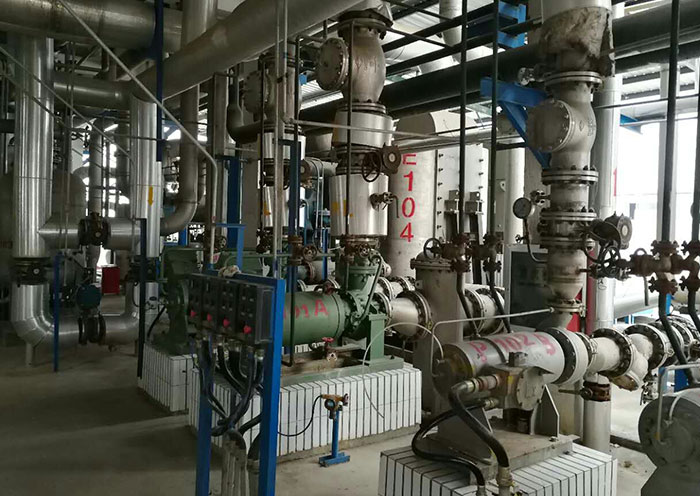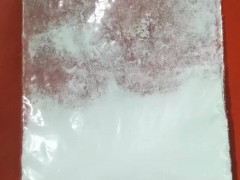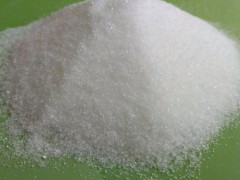The Anthraquinone process is the most commonly used method for hydrogen peroxide (H₂O₂) production worldwide. It has revolutionized the way industries produce hydrogen peroxide, ensuring both efficiency and cost-effectiveness. In this article, we will delve deeply into the intricate workings of this process, explaining every step and highlighting the significant aspects of the hydrogen peroxide production plant using this method.
What is the Anthraquinone Process?
The Anthraquinone process is a chemical method employed to manufacture hydrogen peroxide, a substance widely used across various industries, including textile, paper, and pharmaceuticals. This process involves a cyclic reaction that facilitates the production of hydrogen peroxide through the use of specific organic compounds, primarily anthraquinone derivatives.
The essential chemicals used in this process include 2-EAQ (2-ethyl anthraquinone), aromatic compounds, and TOP (a specialized solvent). These compounds are blended to form a working solution (WS), which is crucial for initiating the chemical reaction.
Step-by-Step Breakdown of the Anthraquinone Process
Step 1: Preparation of the Working Solution (WS)
In the initial phase, the 2-EAQ, aromatic compounds, and TOP are mixed at a specific ratio to create the working solution (WS). This mixture is vital for the subsequent hydrogenation process, which is the cornerstone of the Anthraquinone process. The formulation of WS ensures that the reaction proceeds smoothly under controlled conditions.
Step 2: Hydrogenation Reaction in the Hydrogenation Tower
The next step involves loading the working solution (WS) into a hydrogenation tower that contains a palladium (Pd) catalyst. Along with the WS, hydrogen (H₂) is also introduced into the tower. This step occurs under specific temperature and pressure conditions to facilitate the hydrogenation reaction. During this reaction, hydrogen (H₂) interacts with the organic compounds in the WS, resulting in the production of H-EAQ (hydrogenated 2-ethyl anthraquinone), also known as the hydrogenation solution (HS).
Step 3: Oxidation of H-EAQ
After the hydrogenation reaction, the H-EAQ solution is subjected to oxidation using air. During this process, H-EAQ is oxidized to 2-EAQ (the original anthraquinone compound) and hydrogen peroxide (H₂O₂). The reaction relies on the differential solubility of H₂O₂ in both the WS and water, which plays a critical role in the extraction process.

Step 4: Extraction of Hydrogen Peroxide (H₂O₂)
Following oxidation, the oxidation solution (OS), which contains H₂O₂, is separated from the WS. To achieve this, deionized water is used to extract the hydrogen peroxide from the working solution. This process takes advantage of the different densities of water and WS, making it easy to isolate the H₂O₂ solution.
Step 5: Purification of Hydrogen Peroxide Solution
once the hydrogen peroxide solution is extracted, it undergoes purification through several steps. The solution is purged with air and treated with aromatics to remove any remaining impurities. This stage ensures that the hydrogen peroxide produced is of high purity, ready for further processing.
Step 6: Concentration and Final Product Formation
After purification, the hydrogen peroxide solution is transferred to a falling film evaporator where the concentration of H₂O₂ is increased to approximately 50%. This step enhances the purity of the final product and ensures that the hydrogen peroxide meets the required specifications for industrial use.
Step 7: Recycling of the Working Solution (WS)
The remaining raffinate (residual WS) after the extraction of H₂O₂ undergoes several treatments. It is subjected to settling, water removal, and drying with K2CO3 (potassium carbonate). The raffinate is then regenerated using activated alumina to remove any residual contaminants before it is recycled back into the hydrogenation section. This closed-loop process ensures that the working solution can be reused, reducing waste and improving overall process efficiency.
Advantages of the Anthraquinone Process in Hydrogen Peroxide Production
The Anthraquinone process offers several advantages over other methods of producing hydrogen peroxide:
- Efficiency: The process is highly efficient, producing large quantities of H₂O₂ with minimal waste.
- Recyclability: The ability to recycle the working solution (WS) reduces the cost and environmental impact of the process.
- Cost-Effectiveness: Due to the high efficiency and recyclability, the Anthraquinone process is more cost-effective than alternative methods.
- Purity: The process yields high-purity hydrogen peroxide, making it suitable for a wide range of industrial applications.
Key Applications of Hydrogen Peroxide Produced by the Anthraquinone Process
Hydrogen peroxide produced using the Anthraquinone process is used in various industries, including:
1. Pulp and Paper: Hydrogen peroxide is used as a bleaching agent in the paper industry.
2. Textiles: It is used in textile bleaching and cleaning processes.
3. Chemical Manufacturing: It serves as a precursor for the production of other chemicals.
4. Pharmaceuticals: In the pharmaceutical industry, H₂O₂ is used as an antiseptic and disinfectant.
5. Water Treatment: Hydrogen peroxide is employed in water treatment processes for disinfection and decolorization.
Conclusion: The Future of Hydrogen Peroxide Production
The Anthraquinone process remains the most widely adopted method for producing hydrogen peroxide, thanks to its efficiency, cost-effectiveness, and ability to produce high-purity products. Despite the challenges, the process continues to be optimized to meet the growing demand for hydrogen peroxide across various industries. As industries continue to evolve, the Anthraquinone process will likely remain a cornerstone of hydrogen peroxide production for the foreseeable future.

